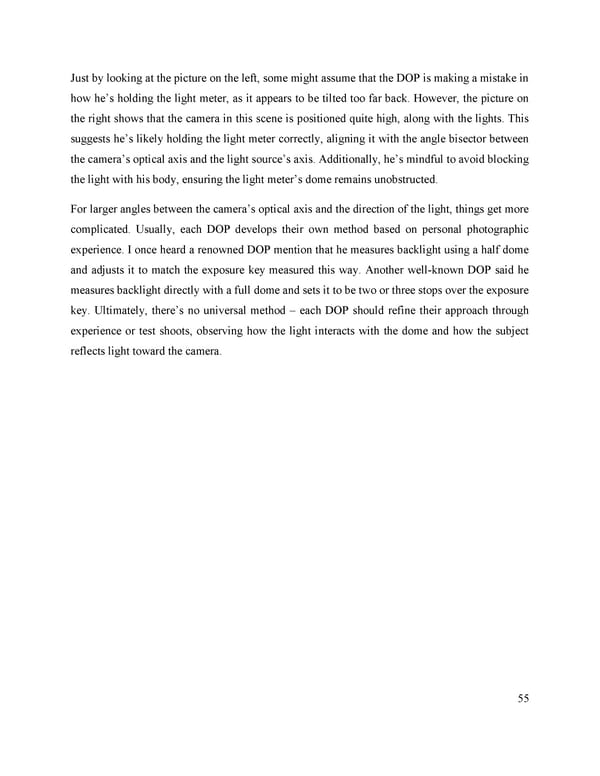Just by looking at the picture on the left, some might assume that the DOP is making a mistake in how he’s holding the light meter, as it appears to be tilted too far back. However, the picture on the right shows that the camera in this scene is positioned quite high, along with the lights. This suggests he’s likely holding the light meter correctly, aligning it with the angle bisector between the camera’s optical axis and the light source’s axis. Additionally, he’s mindful to avoid blocking the light with his body, ensuring the light meter’s dome remains unobstructed. For larger angles between the camera’s optical axis and the direction of the light, things get more complicated. Usually, each DOP develops their own method based on personal photographic experience. I once heard a renowned DOP mention that he measures backlight using a half dome and adjusts it to match the exposure key measured this way. Another well-known DOP said he measures backlight directly with a full dome and sets it to be two or three stops over the exposure key. Ultimately, there’s no universal method – each DOP should refine their approach through experience or test shoots, observing how the light interacts with the dome and how the subject reflects light toward the camera. 55
 Lost Analogue: Exploring Film, Music, and Interdisciplinary Methods in Education Page 55 Page 57
Lost Analogue: Exploring Film, Music, and Interdisciplinary Methods in Education Page 55 Page 57